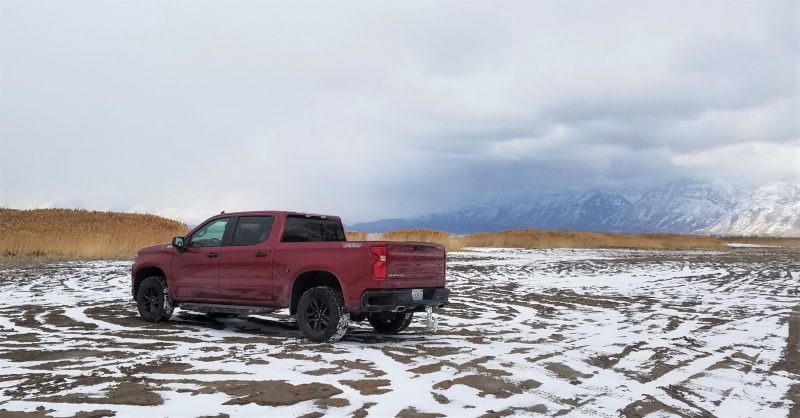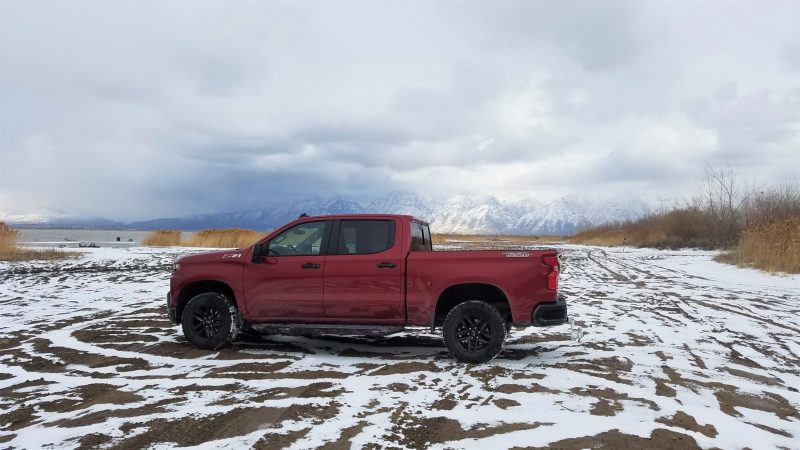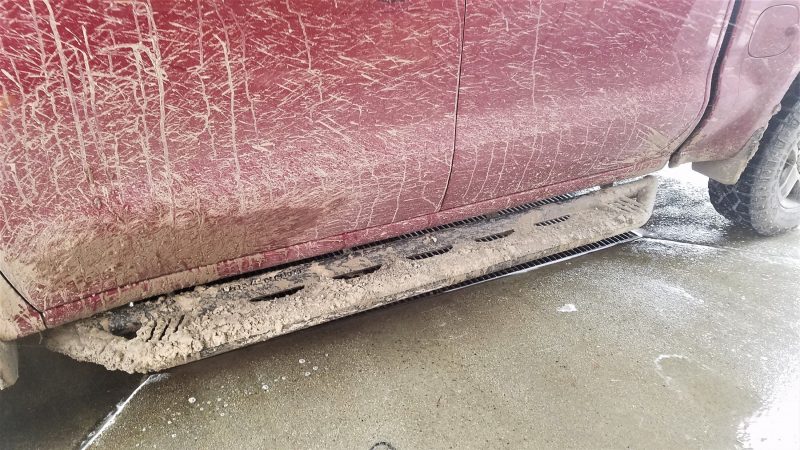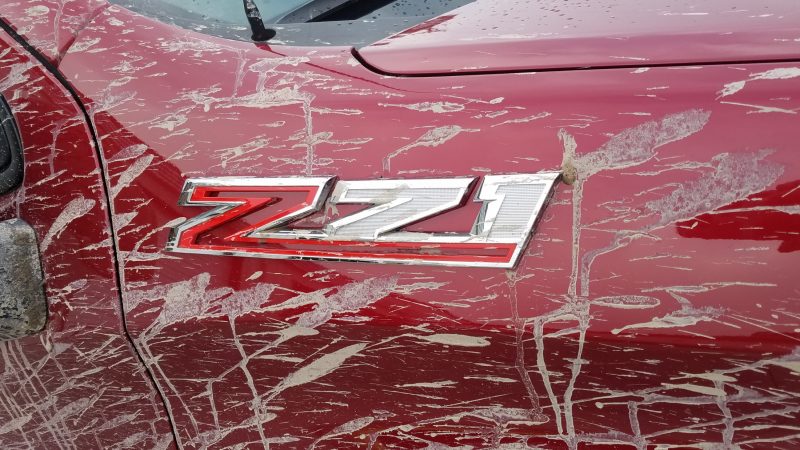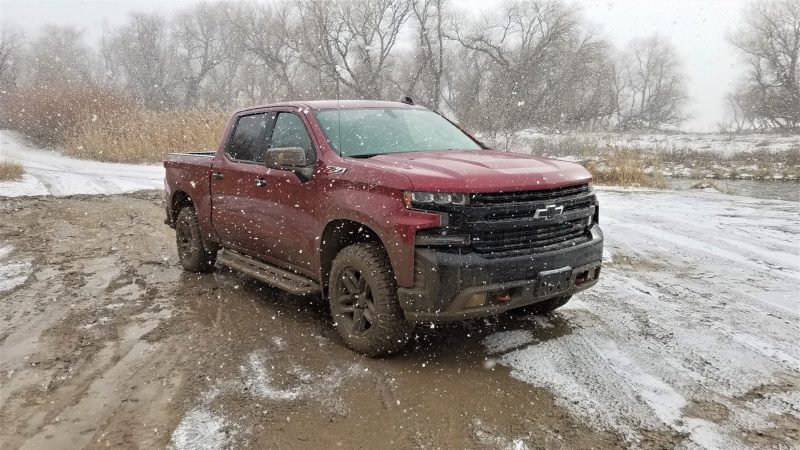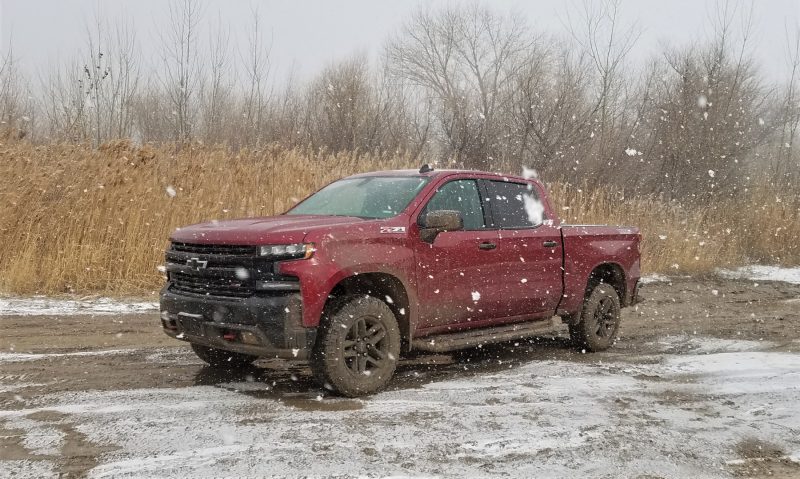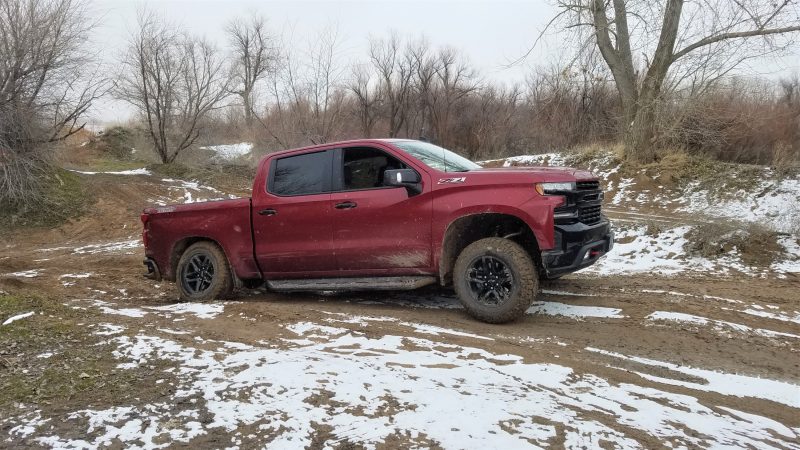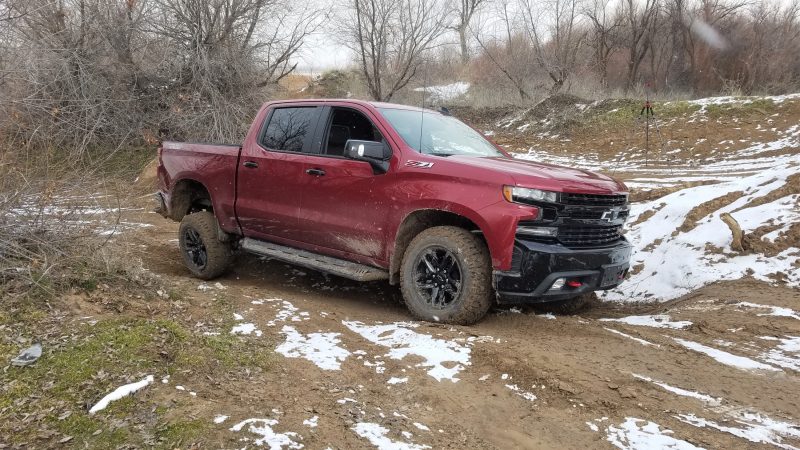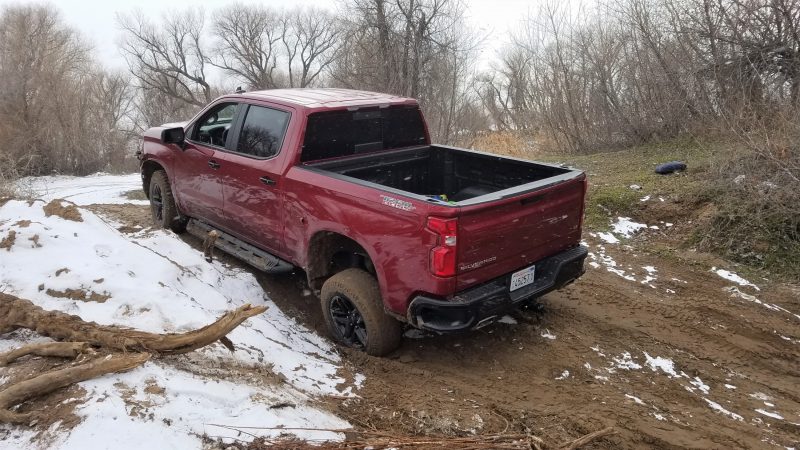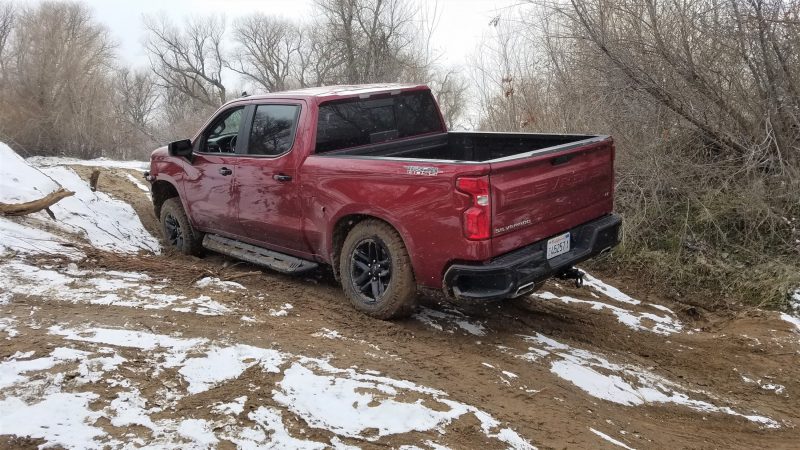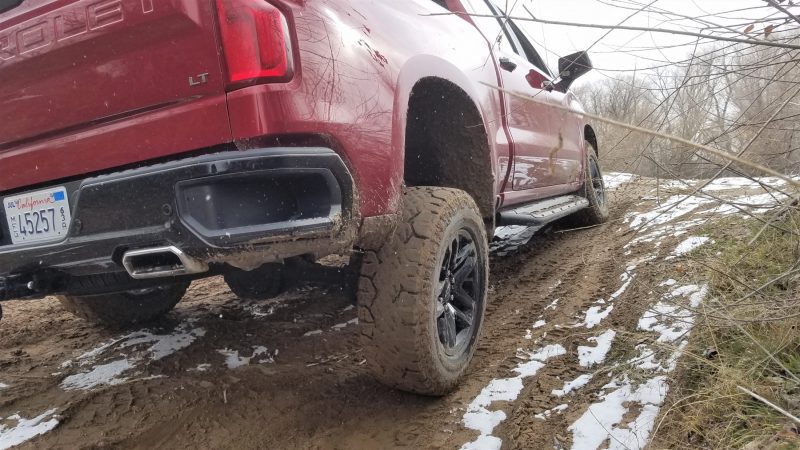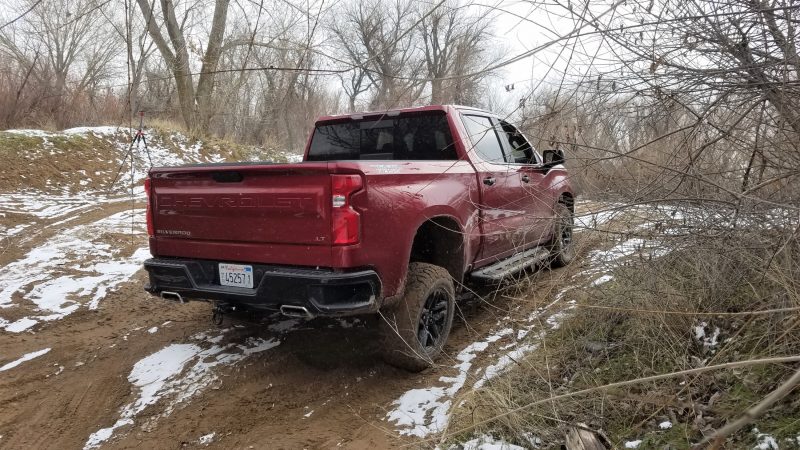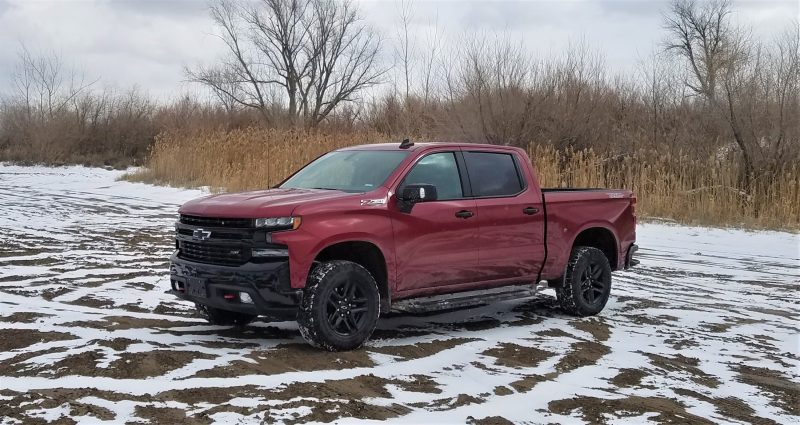Spending time with the 2019 Chevy Trail Boss allowed us to dive deep into how the various traction systems work on all light duty Chevy trucks.
We combined the information we gained from speaking with an engineer at Chevy with some real-world testing and here is what we found.
All of the systems below work in 2WD, AWD and 4WD Chevy trucks except of course for the 4WD auto, 4WD high and 4WD low for vehicles not equipped with 4WD or 4WD low.
Brake Limited Slip
There are a variety of manufacturers that use a brake limited slip system as a traction aid, and they all call it something different. GM calls it pinion control. Essentially, the brake limited slip uses the ABS wheel speed sensors to detect when a wheel loses traction. It then applies the brake to that wheel to help transfer power to other wheels with traction. The bigger the speed differential between two wheels on one axle, the more brake pressure is applied to the spinning wheel.
For the Silverado, this system is designed to be used in light to medium off-road driving. Some systems will make the speed of two wheels on an axle the close to the same, but the GM system still allows for a large wheel speed difference. This helps to engage the G80 locker if equipped. For GM trucks the brake limited slip cannot be disengaged. That means with traction control and stability control off the brake limited slip will still fully function. In our testing, the system worked well, but clearly wasn’t as aggressive as similar systems from other manufacturers, and certainly not as much as the off-road cruise control systems like Crawl Control on Toyota‘s and Trail Control on the Ford Raptor and Ranger.
G80 Rear Locking Differential
The G80 locker is made by Eaton and automatically locks the differential once a difference in speed between the two wheels on the rear axle reaches 100-120 rpms. One major benefit of the G80 is that there is no needed input from the driver to lock the differential; it’s all automatic and it locks fully, unlike a clutch system.
The G80 functions completely separate from all other truck systems, which means that there is no interference between the electronically controlled systems and the mechanical G80. The auto locking feature will not engage at vehicle speeds over 20-25 mph. It functions the same whether in a forward or reverse gear.
The downsides to the G80 are a result of the upsides, the driver can’t manually engage it; it can engage hard sometimes and there is no way to keep it locked or unlocked. It works well for most on-road low traction and medium off-road situations. On difficult off-road tracks, a driver controlled locking differential is preferred. The locker automatically disengages when pressure is equalized between the axle shafts.
4WD Auto
For Chevy Silverado pickup trucks, the 4WD auto option uses a clutch pack in the center differential that can essentially transfer power anywhere between 0/100 front to rear and 50/50 front to rear depending on a variety of factors.
The main factor is the difference in wheel speed between the front and rear axles, but other things like throttle and steering input can also affect how the center differential responds. Getting heavy on the throttle will automatically apply some pressure to the clutches to reduce the chance of slipping, while in everyday normal driving the system acts as a RWD vehicle.
In our testing we found that when entering a rough situation, it’s always best to engage 4WD high or low to fully lock the center differential to a 50/50 front to rear split.
Auto did a good job and would be great for on road use but seemed to be always changing the torque distribution front to rear when we tested it on soft sand.
4WD High
In most pickup trucks, selecting 4WD high will lock or eliminate the center differential, and the Silverado is similar. Selecting 4WD high will apply maximum force to the clutch pack in the center differential to essentially lock the power distribution to a 50/50 split front to rear.
While it is still a clutch pack, the system applies enough pressure that it’s near impossible to get the clutches to slip. 4WD high is used in low traction areas, like snow covered roads, mud, sand or light off-road situations. It shouldn’t be used on roads with high traction as it can cause binding between the front and rear drive shafts. This causes excessive tire wear and higher stress on drivetrain components.
4WD Low
4WD low changes the transfer case from a 1:1 gear ratio to a 2.69:1 gear ratio. This more than doubles the torque to the wheels and is an excellent tool for low speed maneuvers.
Like 4WD high, 4WD low essentially locks the clutch pack in the center differential to a 50/50 split. Environments where you would use 4WD low would be on low traction terrains where precision is more important than speed, boat ramps and for low speed maneuvering with a heavy payload or trailer. Also, like 4WD high, 4WD low shouldn’t be used on high traction pavement for the same reasons of excessive tire wear and higher stress on drivetrain components.
Trail Boss Off-Road Testing Video
Traction Control
Traction control works similarly across all makes and models of vehicles. Traction control uses the ABS wheel speed sensors to determine if a wheel is losing traction. In the Silverado, traction control has the ability to decrease engine power to reduce slip. It also works in conjunction with the brake limited slip system to apply brake pressure on the spinning wheel(s), which transfers power to the wheel with traction.
While traction control is great for slick surfaces like icy roads, it also hinders a trucks ability when traveling in deep snow, mud or sand. For this reason, most manufacturers include a switch that allows the driver to disable the traction control system and Chevy is no different. Disabling traction control means that engine power won’t be reduced and wheel spin will be allowed. This permits the tires to dig through soft terrain, clear the treads and carry the truck forward.
Electronic Stability Control (ESC)
Stability control uses a variety of sensors to determine if a vehicle is sliding sideways or otherwise not going in the direction the front wheels are pointed. ESC uses the ABS to apply the brake to specific wheels in order to keep the vehicle straight, and also has the ability to cut the throttle. In the Silverado, holding down the traction control button for 5-10 seconds will disable ESC. As a safety precaution, the truck will automatically turn ESC on after a certain amount of time. There are only a few times when turning off ESC is necessary. Typically, soft or slick terrain like mud, sand or snow is where this will be disabled, allowing the truck to drift without cutting power.
Conclusion
Overall, there are many systems available to help keep the Chevy Silverado moving in any terrain. Knowing what the systems are, how to use them and when to disable them will allow a driver to get the most capability out of their vehicle.
2019 Chevrolet Silverado Trail Boss – Mountain Testing in Utah
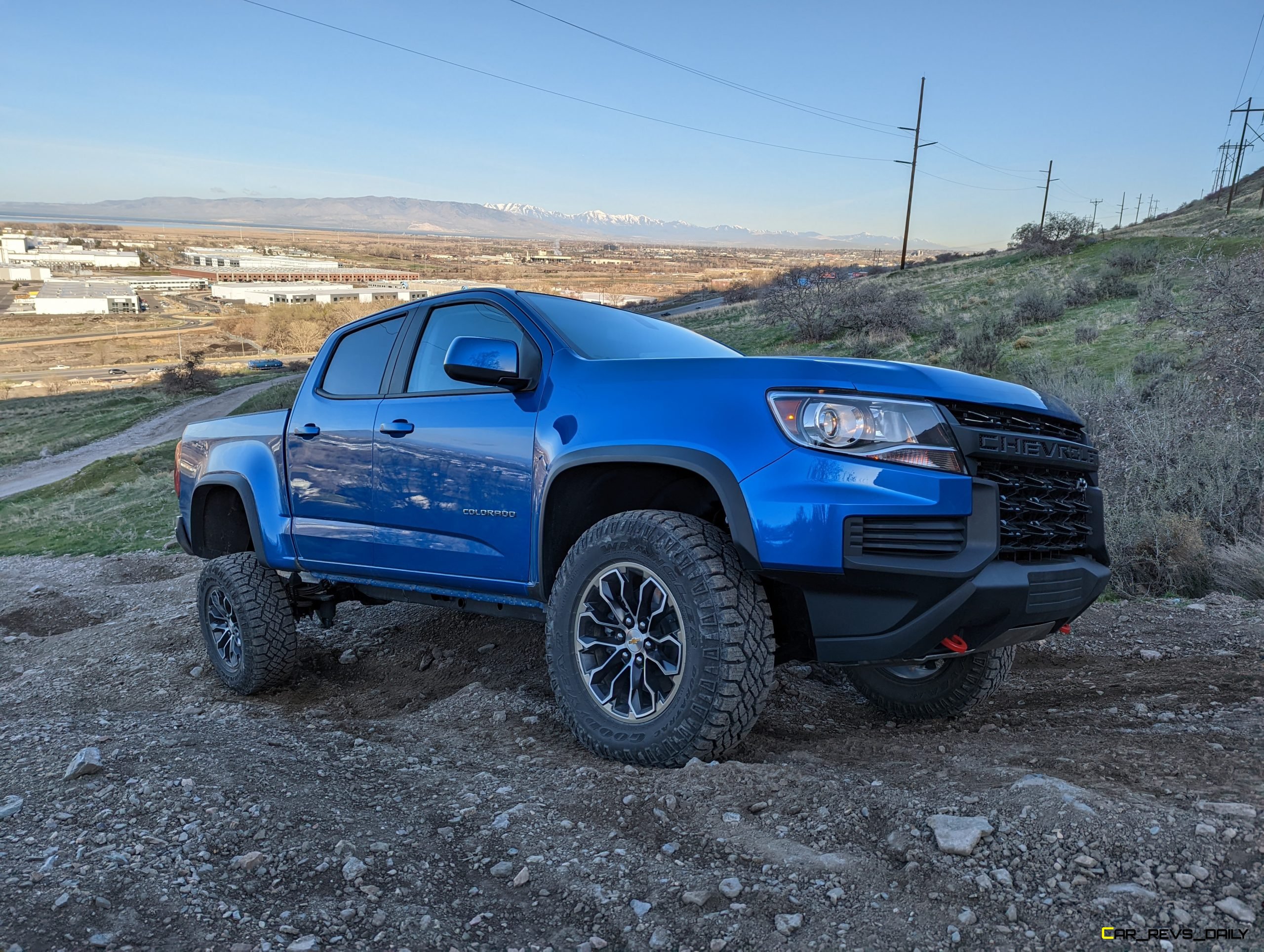
Matthew Barnes is an experienced towing expert. He works as a mechanical engineer and his day job involves testing a variety of vehicles while towing trailers of all types and sizes. Matt shares his knowledge by writing for automotive news outlets in the evenings. When he’s not working he can be found spending time in the great outdoors with his family. He enjoys camping, hiking, canyoneering, and backpacking. Whenever possible he spends time riding in or on any power sports vehicle he can find and claims he can drive anything with a motor, which probably isn’t true.
Matt lives in the Utah mountains and often posts cool off-roading videos to his Instagram and YouTube channel.


